
Exploring Soundbar vs. Receiver: What's the Difference Between Them?
October 20 2023 
Inquiry
Global electronic component supplier AMPHEO PTY LTD: Rich inventory for one-stop shopping. Inquire easily, and receive fast, customized solutions and quotes.
QUICK RFQ
ADD TO RFQ LIST
Two common audio components that can improve your home theater experience are soundbars and Receivers. But how are they different from one another? And which one is best for you? In this blog, we'll explore the key differences between Soundbars and Receivers, as well as the pros and cons of each option. We'll also discuss some of the most popular Soundbars and Receivers on the market, so you can make the best decision for your needs.
What’s a Soundbar?
A Soundbar is a type of speaker system that is designed to enhance the audio experience when watching TV or listening to music. It is a long, thin speaker that is generally mounted below or above a television. Compared to the built-in speakers featured in most TVs, soundbars are intended to offer improved sound quality and clarity. For a richer audio experience, they frequently include numerous speakers and built-in amplifiers. Some soundbars also come with extra features like wireless connectivity, subwoofers for deeper bass, and virtual surround sound technologies.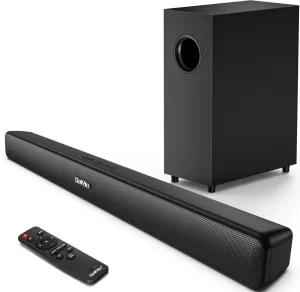
Types of Soundbar
- 2.1-channel Soundbars
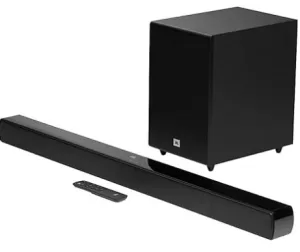
- 3.1-channel Soundbars

- 5.1-channel Soundbars

- Dolby Atmos Soundbars

- Soundbars with built-in streaming

- Soundbars with smart features

What is the loudest Soundbar?
The loudest Soundbar on the market is the JBL Bar 1000. It has a total power output of 1000 watts and can produce up to 103 decibels of sound. It also has a built-in subwoofer to provide deep bass. Other loud Soundbars include:- Klipsch Cinema 600
- Polk Audio Signa S2
- Sonos Arc
- Bose Soundbar 900
- Sony HT-A7000
How long do Soundbars last?
Depending on how well they are taken care of, soundbars typically last 6 to 16 years. It might not last as long if you use your Soundbar frequently and don't properly care for it. It can endure for many years, though, if you take care of your Soundbar and utilize it sensibly.What is a Receiver?
A Receiver, commonly referred to as an AV Receiver or an audio/video Receiver, is an essential part of a home theater or audio system. Blu-ray players, gaming consoles, media players, and speakers are just a few of the audio and video sources that can be connected to it as a hub. A Receiver's main job is to gather audio and video signals from various sources and prepare them for playback. It serves as a switcher, enabling you to choose and change between several input streams. The audio signals are then amplified by the Receiver and sent to the associated speakers, producing the sound.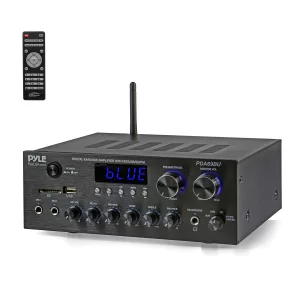
Types of Receivers
- Stereo Receivers
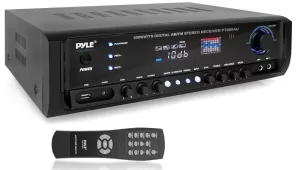
- Surround sound Receivers
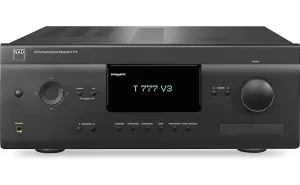
- A/V Receivers
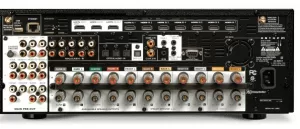
- Network Receivers
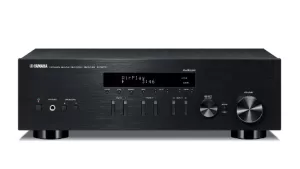
- Multi-room Receivers
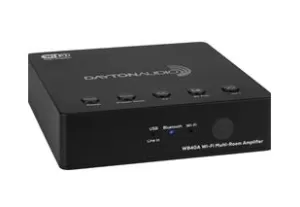
Video related to Soundbar vs. Receiver
How do Soundbars work?
A virtual surround sound effect is produced by soundbars by combining several speakers. The horizontal bar-shaped speakers are usually positioned to reflect sound off your room's walls and ceiling. Compared to the built-in speakers on the majority of TVs, this produces a more immersive and lifelike listening experience. Deep bass is produced by a subwoofer that is also built into some Soundbars. Subwoofers are usually located on the floor and are made to reproduce low-frequency sounds that are challenging for smaller speakers to do. Usually, an HDMI cable is used to connect soundbars to your TV. This enables the Soundbar to receive the audio signal from your TV and process it using its internal amplifiers. Optical audio inputs on some soundbars allow for connection to outdated TVs and other electronics. The Soundbar's remote control can be used to change the volume, input choice, and other settings after it is connected to your TV. The Soundbar's remote control can also be used to adjust the TV's volume. Here is a step-by-step guide on how to set up a Soundbar:- Utilize an HDMI cable to connect the Soundbar to your TV.
- Connect a power outlet to the Soundbar.
- Switch on both your TV and the Soundbar.
- Choose the HDMI input on your television that matches the HDMI output on your soundbar.
- To suit your tastes, change the Soundbar's volume.
- To test the Soundbar, play some audio content.
How do Receivers Work?
- The audio and video signals from your source devices are received by the Receiver. Several inputs, including HDMI, optical audio, and coaxial audio, are used for this. Usually, the Receiver can manage several source devices simultaneously.
- The audio signals are decoded by the Receiver and divided into many channels. A digital signal processor (DSP) is used for this. The DSP is a potent computer processor that can process audio data through intricate mathematical calculations. Thus, surround sound codecs like Dolby Atmos and DTS:X can be decoded by the DSP.
- The audio signals are amplified by the Receiver. Using a power amplifier allows for this. The audio signal is strengthened by the power amplifier so that it can drive your speakers.
- The amplified audio signals are sent to your speakers by the Receiver. Multiple speakers can often be played at once via the Receiver. As a result, you can install a surround sound system in your house.
- The video signal is sent from the Receiver to your TV. Multiple video inputs and outputs can normally be handled by the Receiver. This makes it possible for you to connect your TV to numerous sources.
Differences Between Soundbars and Receivers
| Feature | Soundbar | Receiver |
| Speakers | Built-in speakers | Requires external speakers |
| Surround sound | Virtual surround sound | True surround sound |
| Features | Bass management, audio equalization, network connectivity (optional) | Surround sound decoding, bass management, audio equalization, network connectivity (common) |
| Price | Affordable | More expensive |
| Ease of use | Easy to set up and use | More complex to set up and use |
- Room size: A Soundbar can be all you need in a small space. To get good sound quality in a large room, you might need a Receiver and several speakers.
- Budget: Generally speaking, soundbars are less expensive than Receivers. A Soundbar is a good choice if you have a limited budget.
- Features: A Receiver is a better choice if you want features like surround sound decoding and bass management.
- Usefulness: Compared to Receivers, Soundbars are typically simpler to set up and operate. A Soundbar is a good choice if you lack technological sophistication.
Pros of Soundbar
- All-in-one solution: Soundbars are frequently all-in-one solutions because they come equipped with speakers, amplifiers, and decoders. They are therefore simple to set up and operate.
- Compact size: Soundbars are a wonderful choice for tiny places because they are often smaller than Receivers.
- Affordability: Receivers tend to be more expensive than Soundbars.
Pros of Receiver
- More features: Compared to Soundbars, Receivers often offer more functions, including room correction and support for surround sound codecs like Dolby Atmos and DTS: X.
- Higher sound quality: Compared to Soundbars, Receivers often output sounds of a greater quality.
- More powerful: Receivers often have greater power than Soundbars, allowing them to drive bigger speakers and generate louder sound.
- More adaptable: Receivers work with a range of speakers, including bookshelf speakers, center channel speakers, and floor-standing speakers. On the other hand, soundbars are often made to work with a certain set of speakers.
Cons of Soundbar
- Limited features: Compared to Receivers, Soundbars often have fewer features. For instance, they might not support surround sound formats like Dolby Atmos and DTS:X or have room correction.
- Lower sound quality: Soundbars often provide sound of inferior quality compared to Receivers.
Cons of Receiver
- Larger size: Soundbars are often smaller than Receivers.
- More expensive: Compared to Soundbars, Receivers are often more expensive.
- More difficult to set up: Receivers can be trickier to set up than Soundbars, particularly if you're utilizing a sophisticated surround sound system.
Where Soundbar is used?
- Home theater systems: Compared to the built-in speakers on most TVs, soundbars offer noticeably better sound quality, making them a popular option for home theater systems. Without the use of additional speakers or cords, surround sound can also be produced with soundbars.
- Living rooms: To enhance the audio of TVs and other electronics, such as streaming devices and gaming consoles, soundbars are frequently used in living rooms. You may play music on soundbars as well.
- Bedrooms: Soundbars can be used in bedrooms to enhance the audio of TVs and other electronics, including music players and streaming devices. Soundbars can also be used to play music or natural sounds to produce a soothing mood.
- Kitchens: To enhance the sound quality of TVs and other devices like streaming players and music players, kitchens can install soundbars. Using a soundbar to play music while cooking or cleaning is another option.
- Offices: To enhance the audio of TVs and other devices like PCs and video conferencing systems, soundbars can be utilized in workplaces. Using a soundbar while working allows you to listen to podcasts or music.
Where Receiver is used?
- Bedrooms: You can use Receivers in bedrooms to run home theater systems or just to play music.
- Kitchens: You may use Receivers in kitchens to run home theater systems or just to play music while you cook or clean.
- Offices: Receivers can be used in workplaces to run home theater systems or just to play music for relaxing background noise.
- Bars and restaurants: Sound systems for music and entertainment are frequently powered by Receivers in bars and restaurants.
- Gyms and fitness studios: To power sound systems for music and inspiration, Receivers are frequently used in gyms and fitness studios.
- Schools and universities: To power sound systems for classrooms, lecture halls, and other events, schools and universities frequently use Receivers.
Conclusion
In conclusion, it is crucial to comprehend the distinctions between Soundbars and Receivers to make wise choices about audio technology. Readers will have the skills to improve their audio experiences by learning about Receivers' capabilities, troubleshooting facets, and significance in communication. Soundbars and Receivers are essential components of our contemporary society, whether it be for enjoying rich soundscapes or assuring reliable communication. How do Receivers WorkConclusionWhere Receiver is usedWhere Soundbar is usedCons of ReceiverCons of SoundbarPros of ReceiverPros of SoundbarDifferences Between Soundbars and ReceiversWhat’s a SoundbarHow do Soundbars workVideo related to Soundbar vs. ReceiverTypes of ReceiversWhat is a ReceiverHow long do Soundbars lastWhat is the loudest SoundbarTypes of Soundbar
Related Articles
- ·Stratix 10 VS Stratix V: Which FPGA is Right for Your Next Project?
- ·Intel Xeon Platinum 8454H vs AMD EPYC: Which Reigns Supreme?
- ·A Deep Dive into the AMD EPYC 4564P Processor
- ·MSP430F5438A vs MSP430F5529: A Detailed Analysis of Their Capabilities
- ·Comparing MSP430F6659 and MSP430F5419A: Which One is Right for Your Project?
- ·Exploring the Features of MSP430F5529 and MSP430F5638 Microcontrollers
- ·Demystifying 20 Microcontroller Projects for Beginners
- ·Unveiling the Ultimate Guide to Microcontroller Programming
- ·4680 Battery: Unveiling the Power Potential of the Next-Gen Cell
- ·Exploring the Case Studies on Arduino Applications
Populer Posts
